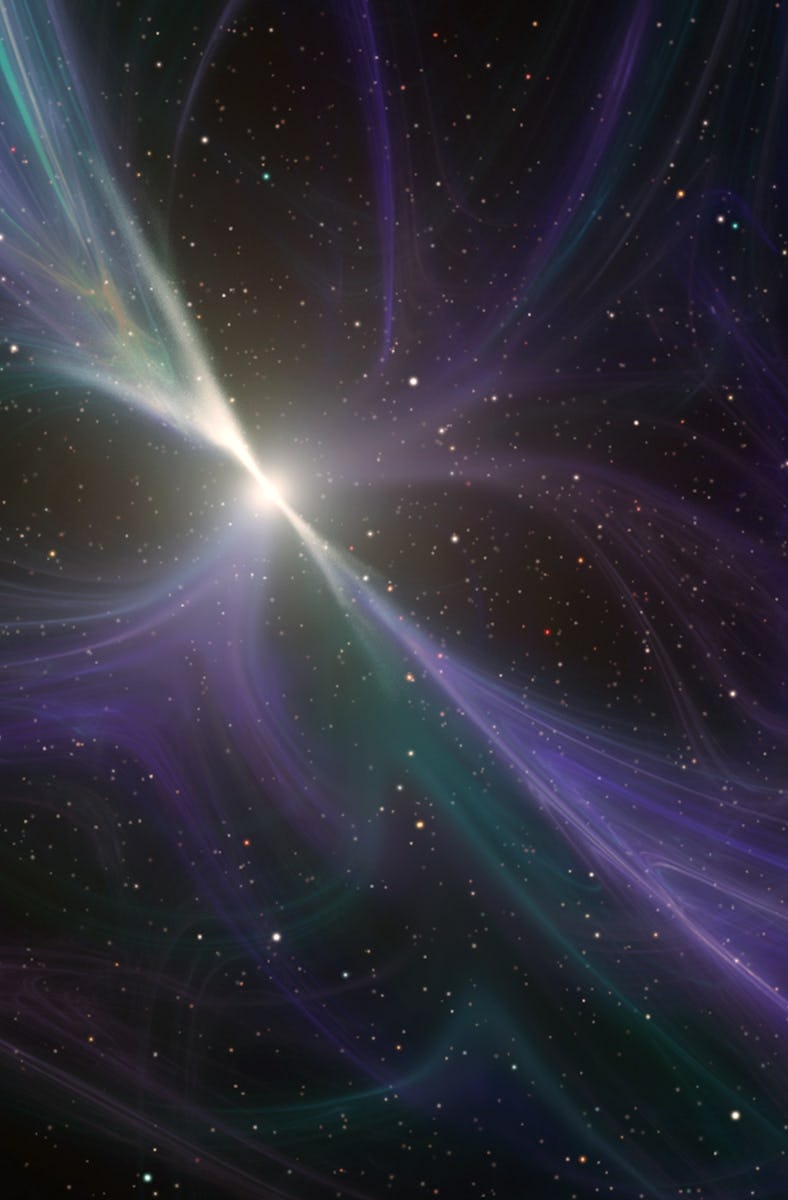Dead Stars Could Hold the Secrets of Dark Matter
If you want to find something that's invisible except for its gravitational effects, look down the steepest gravity wells in the universe.

The burned-out cores of dead stars may be hiding some clues to the nature of dark matter.
In a recent paper (which has not yet been peer-reviewed), Queen’s University astrophysicist Joseph Bramante and Indian Institute of Science theoretical physicist Nirmal Raj suggest that physicists could learn more about dark matter by watching how it behaves in the intense gravity of neutron stars: the burned-out cores of massive stars. Dark matter has mass, so it has its own gravity – but it’s also affected by the gravity of other matter, which means that dark matter passing close to a neutron star should get sucked in just like regular matter. And by studying the unseen effects of dark matter on neutron stars, Bramante and Raj say we could learn more about what dark matter is and how it works.
Also, sometimes the neutron stars might explode.
In a neutron star, the atoms that once made up the core of a star have been squashed so tightly that they don’t have room to be atoms anymore; they’re just neutrons, packed into a super-dense ball.
How Do You Find Invisible Matter?
Just like its name suggests, dark matter is invisible; it doesn’t absorb, reflect, or emit light. We only know it exists because astronomer Vera Rubin noticed that something unseen was making galaxies rotate faster than they otherwise should. More than 40 years later, we still don’t know what dark matter is or where it came from; all we know is that its unseen mass helps shape the universe we can see and touch.
Since gravity is the only way to detect dark matter, Bramante and Raj suggest that if we want to watch dark matter in action, we should take a closer look at some of the densest objects in the universe. And outside of a black hole, the densest objects in the universe are neutron stars (inside of a black hole, it’s too dark to see — because light can’t escape the black hole’s tremendous gravity).
Bramante and Raj say that there are several ways dark matter falling into a neutron star could make its presence known. The invisible mass of dark matter could change how fast the neutron star rotates (called angular momentum), just like it does on a much larger scale with galaxies. If astronomers can measure neutron stars precisely enough, they might notice a neutron star that’s spinning more quickly, or changing speed more often, than it looks like it ought to. That could be a clue to the presence of dark matter hidden deep inside the dead star.
Particles of dark matter could also bump into each other, and those collisions would release energy. Bramante and Raj say dark matter falling into a neutron star might even release enough energy to kickstart a runaway thermonuclear reaction that blows up the neutron star. That’s unlikely, but it’s technically possible and definitely fun to think about.
Exactly how this works will depend on what dark matter actually is and how it interacts with regular matter, and we still don’t know. In theory, watching what happens to neutron stars could shed some light on the burning question of what dark matter is and how it relates to the rest of the universe.
Because neutron stars are so dense — imagine the mass of two Suns packed into a space just a few miles wide — anything their gravity captures gets accelerated to tremendous speeds as it falls in. High-speed collisions between particles release more energy than slower collisions. And because neutron stars are relatively cool, the effects of all that extra energy might be easier for astronomers to spot.
Even so, spotting the effects of invisible dark matter in neutron stars will require very precise measurements of the temperature, mass, brightness, and rotation speed of lots of neutron stars.
This article was originally published on